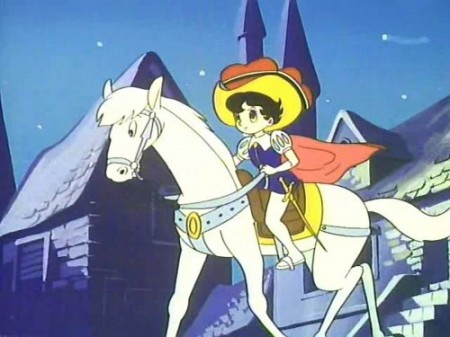Ask John: How Many Anime Have Cross-Dressing Lead Characters?

Question:
I saw Rose of Versailles recently and I really enjoyed it. I was just wondering but are there any other animes which feature a crossdressing main protagonist?
Answer:
Because performance art cross-dressing in kabuki theater has been a part of Japanese culture for centuries, the concept of cross-dressing is not as unusual or ostracized in Japanese society as it is, for example, in American society. Near countless anime have included cross-dressing characters. A handful of anime, such as Ranma 1/2, Cinderella Boy, and Kashimashi, have even revolved around characters that physically change gender. But lead or co-lead characters that routinely cross-dress are not quite as common as cross-dressing supporting characters, and many of the anime that do utilize cross-dressing protagonists do so in comparable situations.
Oscar of Versailles no Bara was actually preceeded by Princess Sapphire in the seminal 1967 Ribbon no Kishi shoujo anime television series. In Princess Knight, Saphire adopted a male persona in order to legitimately claim royal ascendency. Furthermore, setting a precedent to be used by later anime, Saphire also adopted a masculine “hero” persona that reappeared in the 1979 Versailles no Bara television anime. Later swashbuckling heroines appeared in La Seine no Hoshi, Shoujo Kakumei Utena, and Romeo x Juliet but only Utena Tenjoh choose to cross-dress.
Having to fit into a non-integrated school is a common justification for cross-dressing within anime. The trope forces male characters to pose as women in the 1987 Oira Sukeban and 2012 Asa Made Jugyou Chu! OVAs, and the 2001 I My Me! Strawberry Eggs, 2006 Otome wa Boku ni Koishiteru & Princess Princess, and 2009 Mariaholic television series. The 1983 Stop!! Hibari-kun! television series also revolved around a boy attending school as a girl, but Stop!! Hibari-kun! is a rare, unique anime in the respect that its co-protagonist Hibari Oozora personally chooses to live as a female. Contrary to conventional circumstances, he isn’t forced into cross-dressing by circumstances. The 2006 Ouran Koukou Host Club television series turned the trope around by starring a female high school student who adopts a male persona & clothing.
Like Stop!! Hibari-kun, the 2010 Kuragehime television series is unique in the respect that its co-lead character is a boy who enjoys cross-dressing and living as a woman instead of unwillingly being forced to adopt a female persona. Hana, the obvious man in drag in the 2003 feature film Tokyo Godfathers, is likewise a co-leading character who prefers cross-dressing rather than cross-dresses because he has to.
After ten years, there should now be little need for a “spoiler tag” prefacing the fact that the protagonist of Kino no Tabi is actually a girl who looks and acts like a boy.
Add a Comment
You must be logged in to post a comment.



Princess Jellyfish & Wandering Son also feature lead protagonists who frequently cross-dress for various reasons. Hm… Can’t think of any others at the moment.
Off the top of my head, and not tangeting into one-off fanservicey things, here’s what I’ve got…
– Dual Parallel Trouble Adventure features a male protagonist who has to look female for a bit since he’s in a world where only women can pilot giant robots. They lose this element after a bit though.
– Loren in Turn A Gundam has to dress like a woman for no particular reason during a few early episodes. I think the idea is to show that “even women can pilot our mobile suits”, which meant something given the faux Victorian setting, but it never really gets elaborated on and was likely mainly there for fanservice.
– Here is Greenwood has a very interesting cross dressing scenario in that I won’t elaborate on and will instead encourage you to watch if you like older slice of life anime.
– Not the lead, but one of the characters in Stein’s Gate is an active cross dresser and it actually comes up as a plot point.